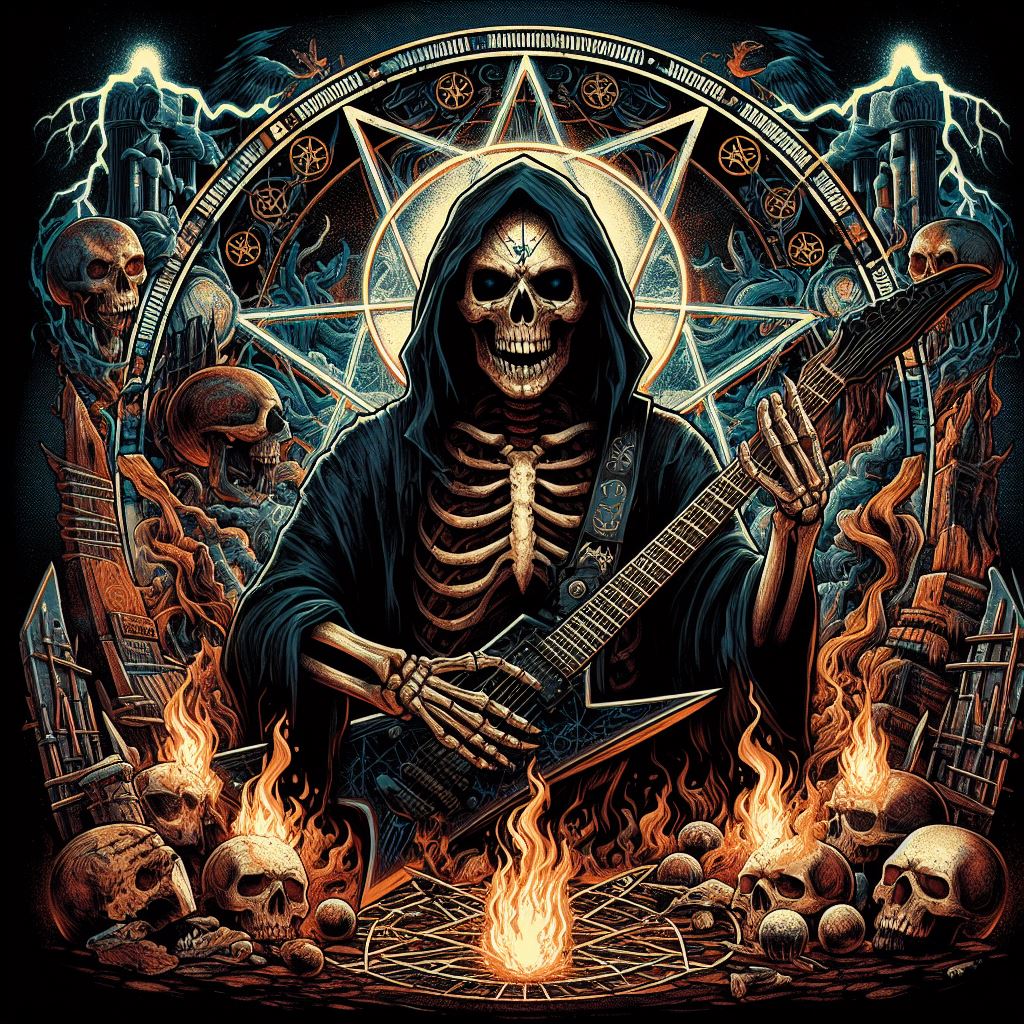Destruction, a name synonymous with blistering riffs, anti-religious themes, and unbridled aggression, stands as a titan of the German thrash metal scene. Formed in 1982, they, alongside Kreator, Sodom, and Tankard, cemented Germany’s reputation as a breeding ground for some of the most ferocious metal on the planet. This article delves into the band’s rich history, exploring their rise to prominence, internal struggles, and enduring legacy.
From Knight of Demon to Destruction (1982-1984):
The band’s origins trace back to Weil am Rhein, Germany, where four young musicians – vocalist Ulf Kühne, guitarist Mike Sifringer, bassist Marcel “Schmier” Schirmer, and drummer Tommy Sandmann – united under the moniker Knight of Demon. Inspired by the likes of Iron Maiden, Mercyful Fate, Motörhead, and Venom, their sound leaned towards a more traditional heavy metal approach. However, internal friction between Kühne and Sifringer led to a decisive change. Schmier, possessing a powerful growl and a knack for songwriting, stepped up to become the band’s new vocalist and bassist. With this shift, not just in personnel but also in musical direction, came a new name – Destruction.
Their first offering, the 1984 demo “Bestial Invasion of Hell,” showcased a rawer, faster sound heavily influenced by the burgeoning thrash metal movement. The demo generated a positive buzz within the underground metal scene, eventually catching the attention of Steamhammer Records.
Early Annihilation: The Golden Age (1984-1989):
The newly signed Destruction wasted no time unleashing their debut EP, “Sentence of Death,” in 1984. This release solidified their position as a force to be reckoned with, featuring blistering guitar work by Sifringer, Schmier’s thunderous vocals, and Sandmann’s relentless drumming. Their debut full-length album, “Infernal Overkill,” arrived in 1985, solidifying their reputation as German thrash royalty.
Destruction’s sophomore album, “Eternal Devastation” (1986), cemented their legacy. Tracks like “Infernal Gates,” “Mad Butcher,” and the title track became thrash anthems, lauded for their breakneck speed, crushing riffs, and Schmier’s venomous vocals. The album’s dark aesthetics and anti-religious lyrics resonated with a generation of metalheads yearning for sonic brutality.
Following up on their critically acclaimed releases wasn’t easy. However, 1987’s “Release from Agony” proved Destruction weren’t slowing down. While maintaining their signature aggression, the album showcased a slight shift towards a more technical and melodic sound. This experimentation continued on 1988’s “Mad Butcher,” but internal tensions began to simmer. The band’s relentless touring schedule and creative differences, particularly a desire by some members to explore a more commercial direction, led to a break-up in 1989.
A Fractured Machine: The Unstable 90s (1989-2000):
Following the break-up, Schmier formed a new thrash band called Voodoocult, while other members pursued various projects. However, in 1990, a version of Destruction emerged with Schmier absent. This period, often referred to by fans as the “lost era,” saw the band releasing albums with a significantly different sound, struggling to recapture the magic of their earlier work.
By the late 90s, Schmier found himself yearning to return to Destruction’s roots. He reconnected with Sifringer, and together they decided to reform the band with a renewed focus on their classic sound.
Rebirth and Annihilation: A New Millennium Dawns (2000-Present):
The year 2000 marked a triumphant return for Destruction. Their reunion album, “All Hell Breaks Loose,” saw them pick up right where they left off, delivering a potent dose of old-school thrash. Signing with Nuclear Blast Records further solidified their comeback.
Several critically acclaimed albums followed, including “Inventor of Evil” (2005) and “D.E.V.O.L.U.T.I.O.N.” (2008), showcasing a band reinvigorated and firing on all cylinders. Their music remained ferocious, but also incorporated elements of melody and technicality, drawing praise from both old and new fans.
Destruction continues to be a force in the thrash metal scene today. With their latest album, “Born of Fire” (2020), they prove they haven’t lost their touch. They remain a powerful live act, touring extensively and sharing stages with other thrash legends.

Leave a Reply
You must be logged in to post a comment.